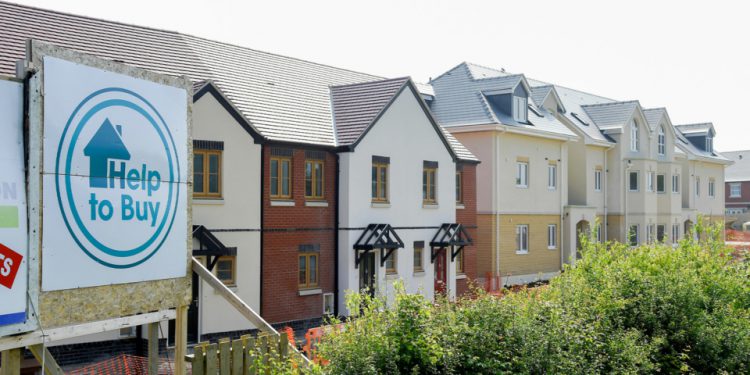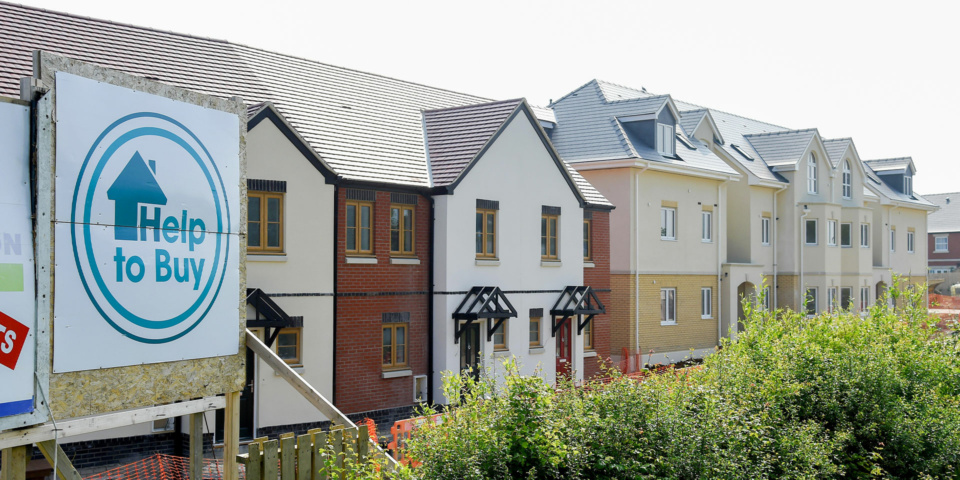New Assistance to Buy scheme launches: here’s what first-time buyers have to know


First-time buyers in England are now able to purchase a home underneath the latest version from the Assistance to Buy equity loan scheme.
The scheme, that is set to run 'till the end of 2023, will now be restricted to people buying their first homes.
Here, we analyse how the new rules work and offer suggestions about alternative ways of getting on to the property ladder.
What is the Assistance to Buy equity loan scheme?
The Help to Buy equity loan scheme was originally launched in April 2021. It allowed first-time buyers and residential movers to buy a new-build home with a 5% deposit.
Buyers may need an equity loan of 20% from the property’s value (40% working in london) and remove a mortgage for that remaining 75% (55% working in london).
Between the scheme’s launch and the end of September 2021, 292,000 homes have been bought by having an equity loan in England, with 82% of those likely to first-time buyers.
This form of the scheme has closed and been substituted with a new iteration of Assistance to Buy, that will run from today 'till the end of 2023.
How may be the new Assistance to Buy scheme different?
There are two key differences between the new and old schemes.
First, the brand new scheme is limited to first-time buyers only (that old scheme was also available to existing homeowners).
Second, the brand new scheme comes with regional price caps, as opposed to the blanket lb600,000 price cap which was previously in effect.
The price caps are positioned at 1.5 times the typical price paid by first-time buyers in every region of England in August 2021. This means the maximum prices in every area the following:
| Region | Maximum price |
| North East | lb186,100 |
| North West | lb224,400 |
| Yorkshire & The Humber | lb228,100 |
| West Midlands | lb255,600 |
| East Midlands | lb261,900 |
| South West | lb349,000 |
| East of England | lb407,400 |
| South East | lb437,600 |
| London | lb600,000 |
Why is Help to Buy changing?
There’s no doubt that the previous iteration of Assistance to Buy was hugely successful, however it has long faced allegations of inflating house prices.
Last year, a Which? investigation found that more than 5,000 Assistance to Buy properties have been resold at a loss, despite overall house prices rising significantly.
The scheme has also been accused of helping people who could have afforded to purchase a house around the open market, instead of prioritising those who most needed the extra help.
The government’s most recent figures reveal that nearly a third (30%) of Help to Buy users up to now had average household incomes in excess of lb60,000, while an additional one out of 10 (12%) had incomes of more than lb80,000.
How equity loans work
If you’re considering using Assistance to Buy, it’s important to understand how the equity loans work.
The loans are provided as a percentage of the property’s value as opposed to a set cash sum, then when you come to resell the home you’ll probably repay a different add up to just how much you originally borrowed.
For example, if you buy a lb200,000 home having a 20% equity loan (lb40,000), but then sell the home for lb220,000, you’ll need to repay 20% from the sale value – so lb44,000 rather than the lb40,000 you originally borrowed.
It’s also vital to have a arrange for how you’ll repay your equity loan should you don’t sell. Loans are supplied interest-free for that first 5 years, but once interest takes over it could add countless pounds annually to your repayments.
How will i find a Assistance to Buy home ?
There are a number of ways you can look for Assistance to Buy homes.
As a first the avenue for call, check the website of your regional Assistance to Buy agent, that ought to list properties in your area. Property portals such as Zoopla and Rightmove allow you to look for new homes, but don’t allow you to filter specifically by Help to Buy properties. Specialist new-build portals such as Share to purchase and What House? offer this function.
High-street estate agents sometimes include new-build homes in their listings, but you might have more joy searching for local developments online.
In February, we visited the websites from the five developers who sold probably the most homes underneath the old scheme (Barratt, Bellway, Persimmon, Redrow and Taylor Wimpey) and found these were all already advertising homes underneath the new iteration of Help to Buy.
Alternatives to Help to Buy
Help to Buy is extremely popular, but it might not be the best scheme for everyone. Here are a few other available choices you might want to consider:
- Low-deposit mortgages: later this month, the government will launch its 95% mortgage guarantee scheme, that ought to make it easier for first-time buyers to obtain a home loan with a low deposit. The large benefit of a traditional mortgage is that you won’t be restricted to a new-build property.
- Shared ownership: shared ownership schemes permit you purchase a share in a house (from 25% upwards) and pay rent around the remainder. These schemes are popular in expensive areas, however the combined monthly costs can quickly add up.
- Guarantor mortgages: these deals allow parents to use their property or savings as collateral for his or her child’s mortgage. Read about the different types within our full help guide to guarantor mortgages.
Help to purchase around the UK
Until recently, Help to Buy schemes were functioning both in Scotland and Wales.
The Scottish scheme closed to new applicants earlier this month. First-time buyers in Scotland can still take advantage of the government’s First Home Fund and Low-cost Initiative for First Time Buyers.
Help to purchase (Wales) continues to be in operation. It allows both first-time buyers and home movers buying new-build properties to get a 20% equity loan. The maximum cost of homes sold underneath the scheme has been reduced from lb300,000 to lb250,000.






